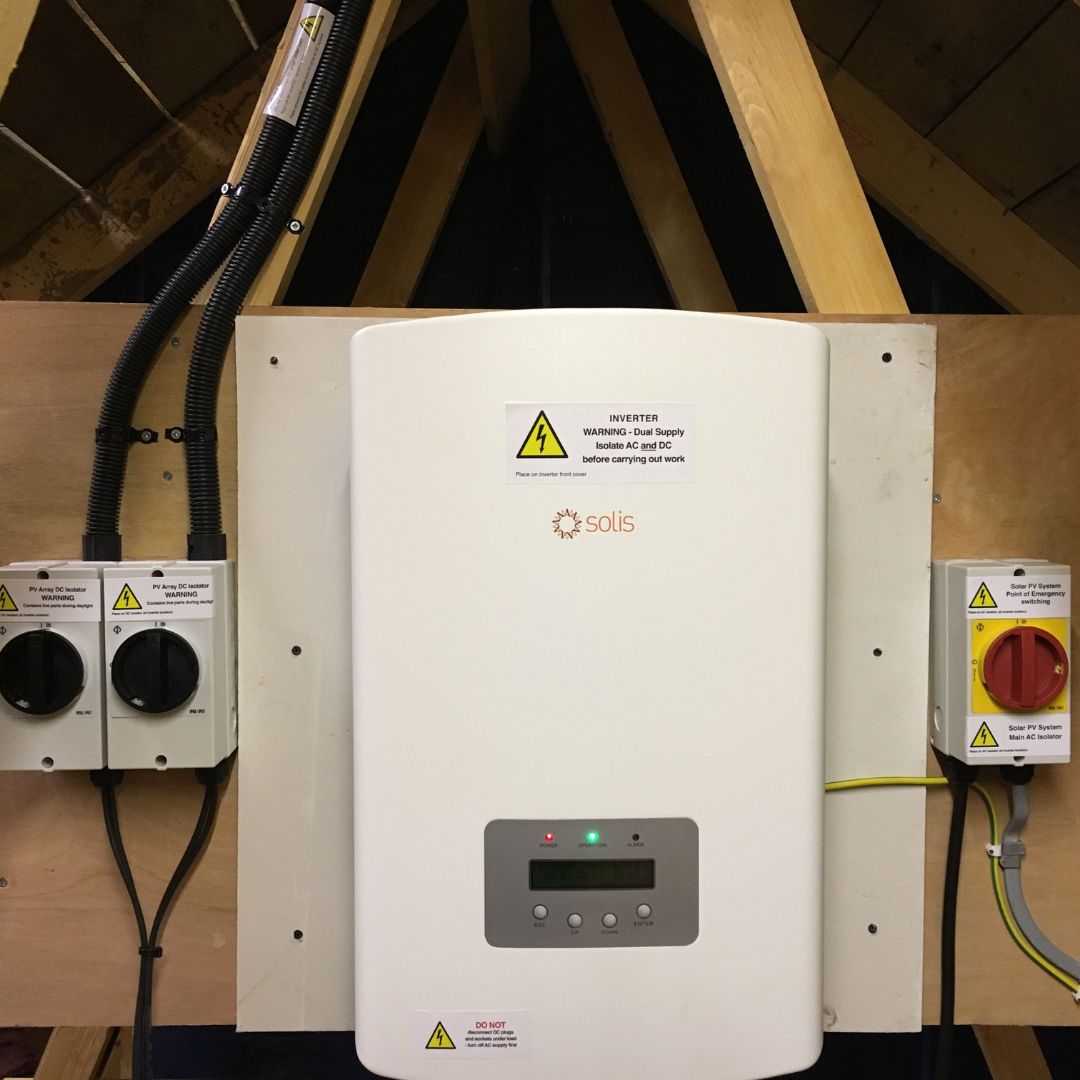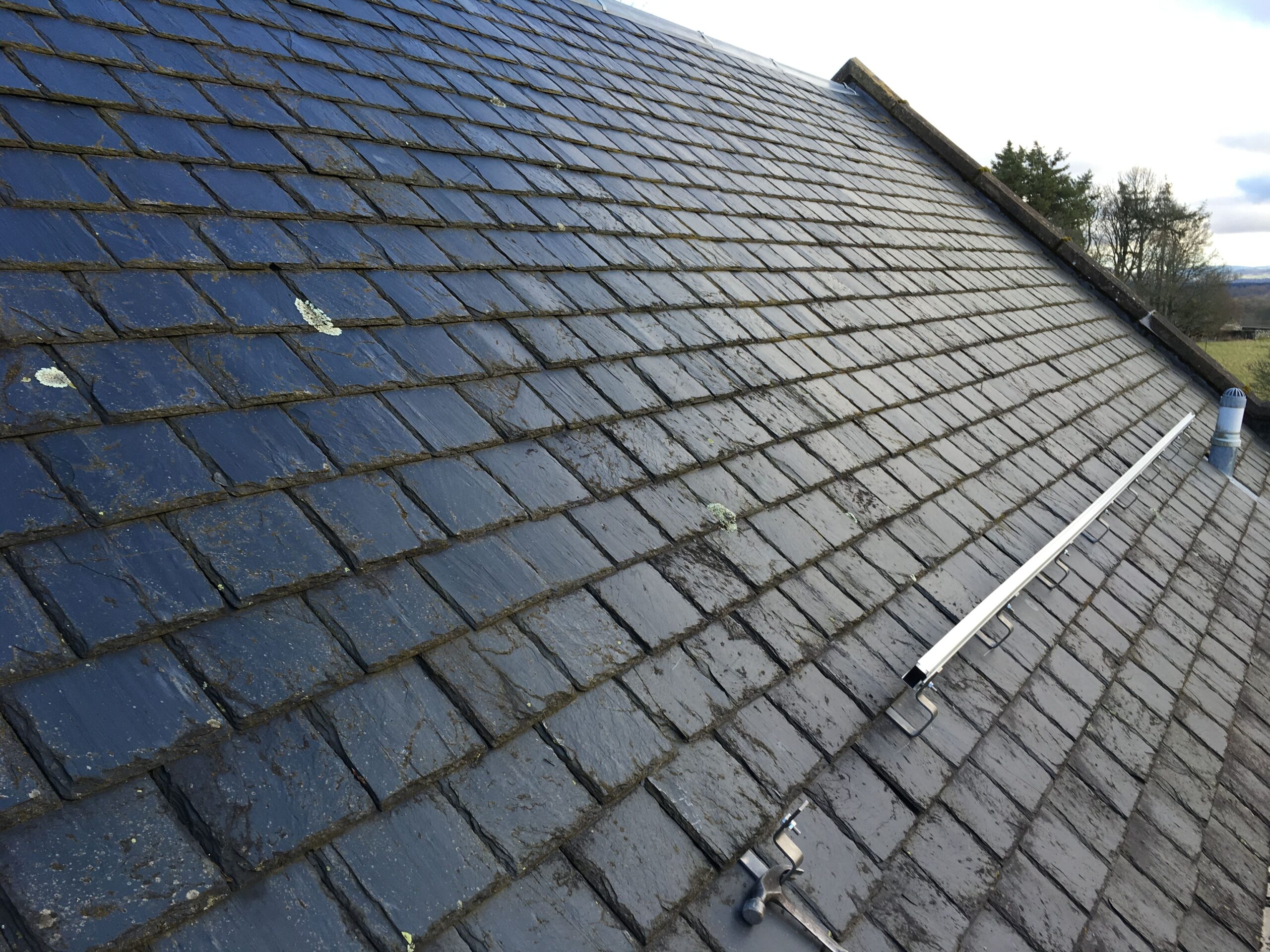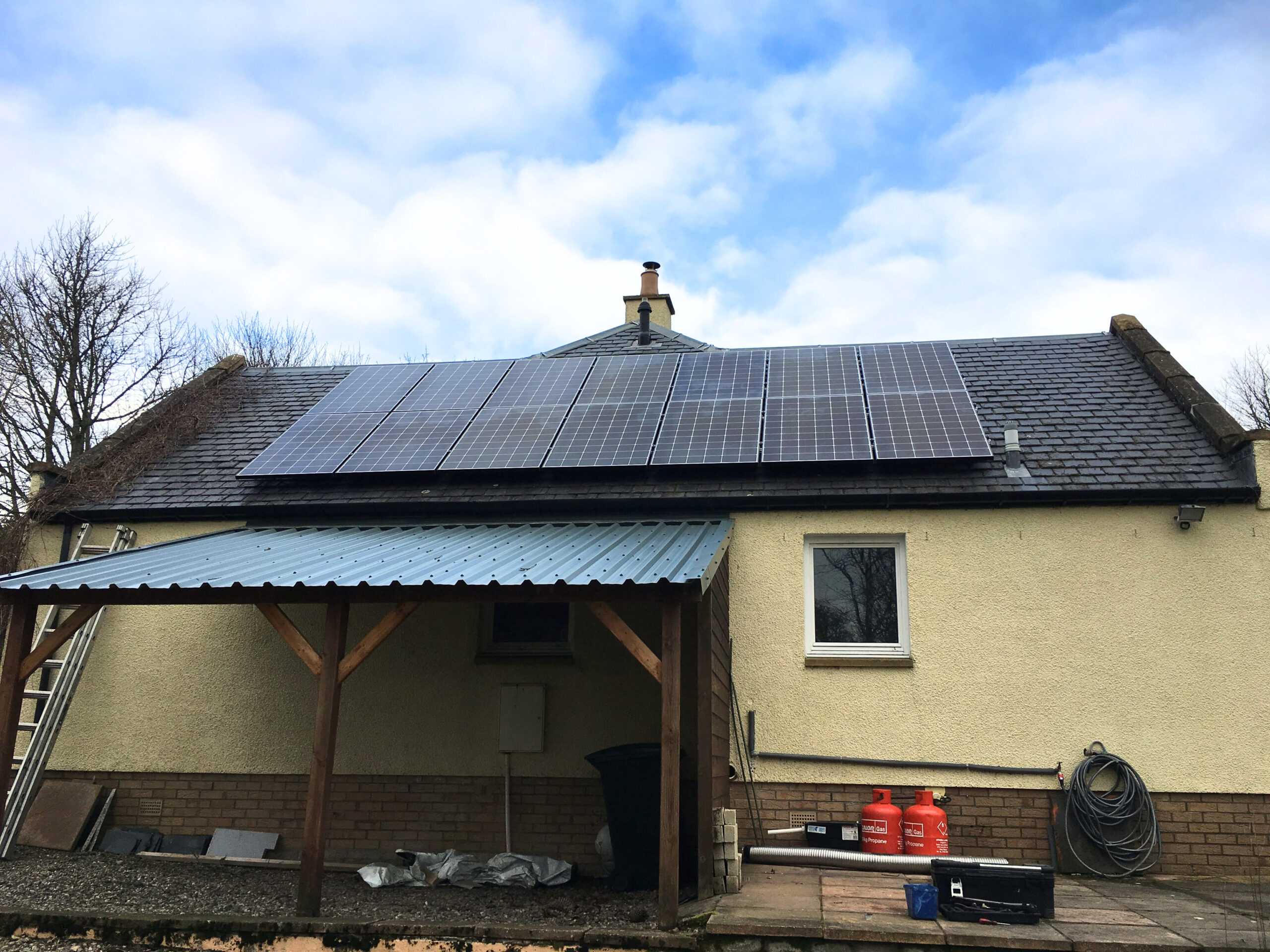Solar Panel Installation
The project began with the timely delivery of all required materials to the site. A dedicated team arrived to ensure everything was ready to begin work immediately. The installation process began with fitting the rails, which are custom designed to suit the specific roof structure of the property. These rails act as the foundation for the solar panels, providing a stable and secure mounting system.
Following the rail installation, our expert solar engineers began partial fitting the high-efficiency LG PV panels. The panels were carefully placed and secured, ensuring maximum sunlight exposure for optimal performance. Once the panels were properly aligned and mounted, the team completed the PV installation with precision and expertise. The next step was integrating the system with the home’s electrical setup.

Electrical Integration of Solar Panel
The inverter was installed next. This device is crucial, as it converts the DC electricity produced by the solar panels into AC electricity, which can be used to power the household. Once the inverter was in place, the team moved on to installing the meter board. This included the installation of an Immersun, a device designed to manage the surplus energy generated by the solar panels and direct it to the water heating system.
A new consumer unit was then installed to manage the electrical flow. This unit is vital in ensuring the safe and efficient power distribution throughout the home. The new consumer unit was also responsible for turning on the inverter, enabling the solar system to start generating power immediately.

Generation Monitoring
A generation meter was installed to ensure the system performs as expected. This meter measures how much electricity the solar system generates, providing both the homeowner and the installation team with valuable data on the system’s output. This also helps assess energy savings and the system’s overall performance.


Wiring and Final Adjustment
The wiring from the solar panels on the roof was routed through the attic to reach the inverter, ensuring a clean and discreet installation. The DC electricity was then connected to the DC panel. At the same time, the AC electricity was routed to the AC panel inside the home, integrating the solar system with the domestic electricity setup. After completing the final checks and ensuring everything was working as expected, the project was deemed finished, with the client satisfied with the quality of the installation.


